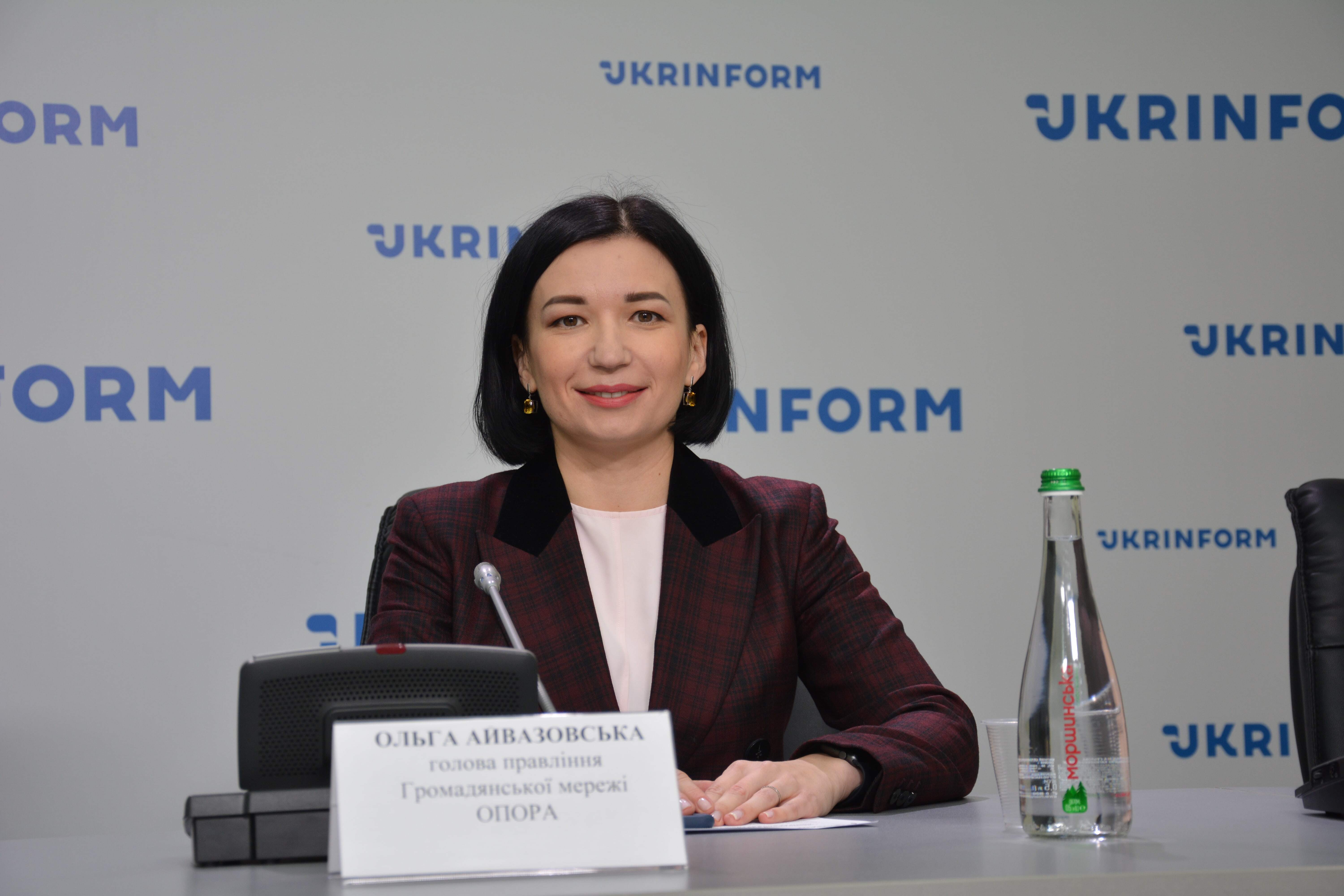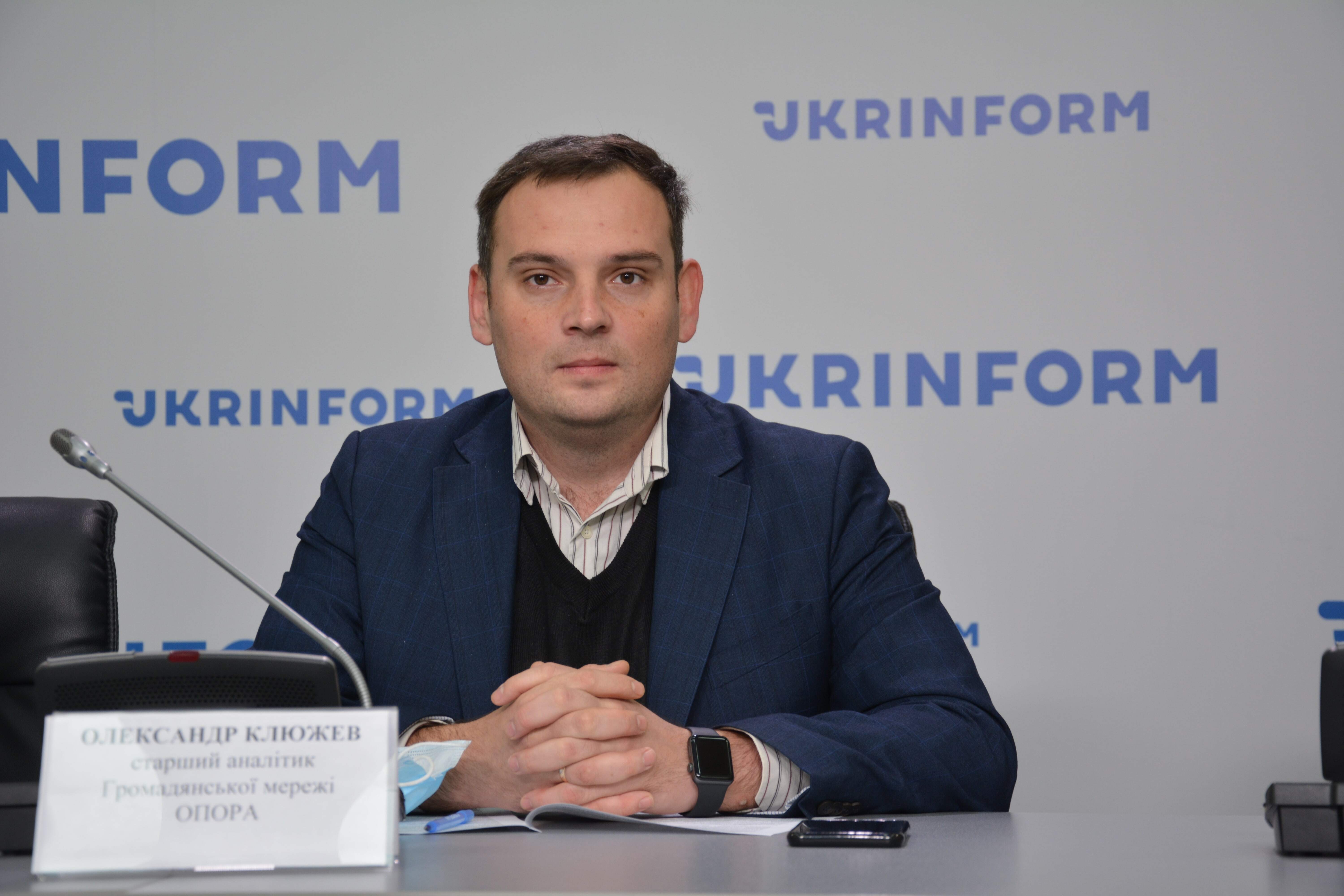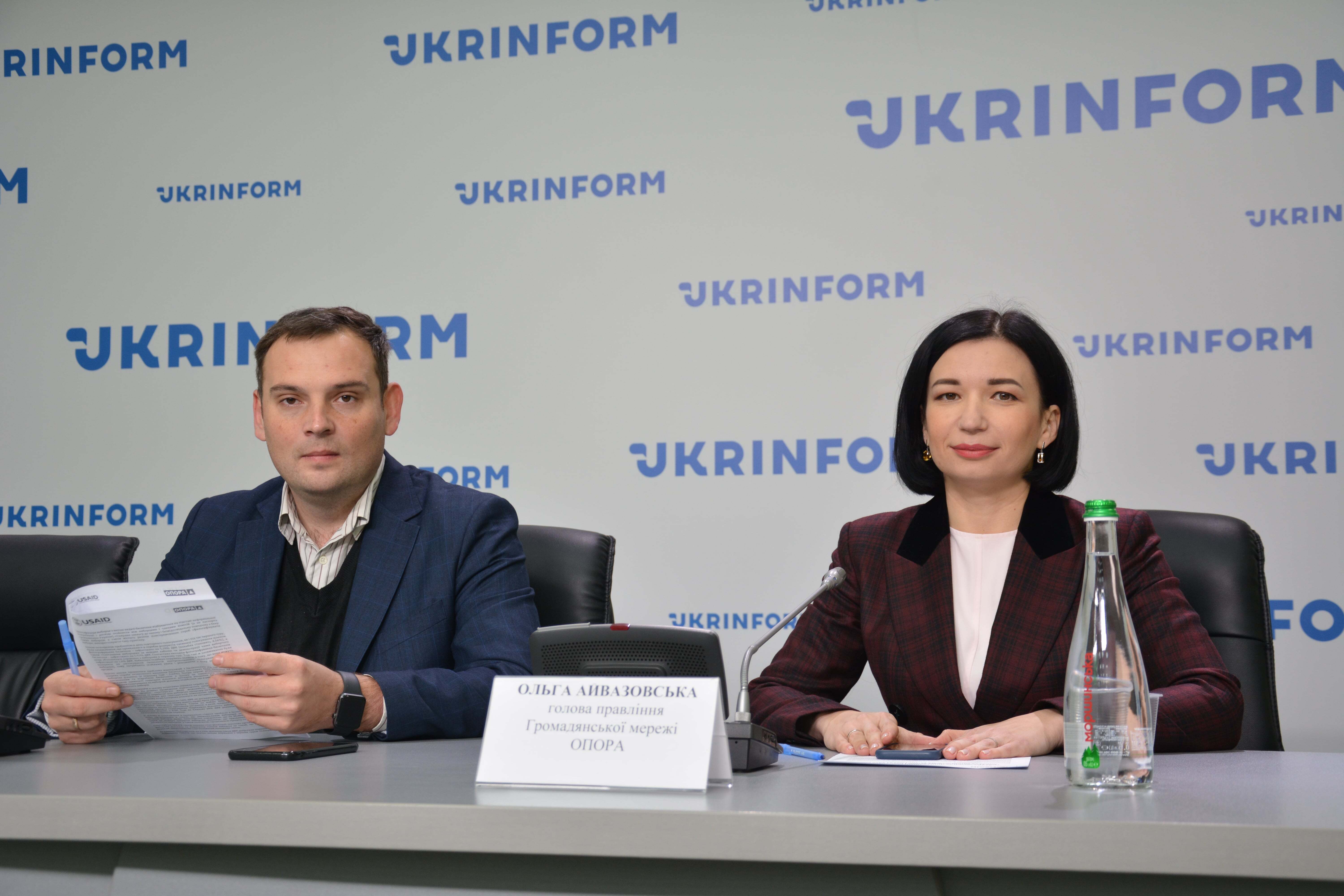The overall statistics of violations and fraud cases during the repeated voting on November, 15, is not much different from the levels documented by OPORA observers at elections on October, 25. According to observers’ general estimates, during the repeat vote, no violations have been detected at polling stations that might impact the election results. At the same time, at the moment of closure on election day, at 10% of polling stations, there were some minor procedural breaches. In the first round, the same elements were identified at 9.4% of PECs.
“Civil Network OPORA hereby states that the day of the second ballot at local elections on November, 15, ran on a proper level in terms of organization. Observers have not documented any flagrant violations that could impact voting results. Most of the detected cases were rather typical and not much different from the incidents documented by OPORA observers at elections on October, 25, 2020,” says Olga Aivazovska, Chair of the Board at the Civil Network OPORA.
 OPORA metered the turnout based on a statistically representative sample of polling stations attended by the organization’s official observers. The data was recorded as of 12:00, 16:00 and 20:00. According to OPORA observers, during the revote on November, 15, the integrated turnout of voters in 7 cities as of 20:00 was 23.9% (error – 1.4%). “Compared to the second ballot of 2015, when the voting was taking place in big cities with the number of voters of 90,000 or higher, the turnout was 12% lower in the second tour. This time, we can see a similar trend: 36% – on October, 25, and almost 24% – on November, 15. It is a result of the less active campaigning and the quarantine restrictions in certain places,” says the expert.
OPORA metered the turnout based on a statistically representative sample of polling stations attended by the organization’s official observers. The data was recorded as of 12:00, 16:00 and 20:00. According to OPORA observers, during the revote on November, 15, the integrated turnout of voters in 7 cities as of 20:00 was 23.9% (error – 1.4%). “Compared to the second ballot of 2015, when the voting was taking place in big cities with the number of voters of 90,000 or higher, the turnout was 12% lower in the second tour. This time, we can see a similar trend: 36% – on October, 25, and almost 24% – on November, 15. It is a result of the less active campaigning and the quarantine restrictions in certain places,” says the expert.
According to Olga Aivazovska, from the moment PECs started operating on the reelection day, OPORA observers have detected and verified 96 violations of electoral law and democratic election standards. Specifically, there were 22 violations related to improper material and technical basis of voting premises, against the requirements set in the Electoral Code, the CEC resolutions and the government’s Procedures for Anti-Epidemic Measures During Voting. “At some polling stations, observers faced facts of obstruction to their lawful activities by election commission members. Another common practice (13 cases in particular) was to issue ballot papers by one PEC member, rather than by two, as provided by the Electoral Code. We must highlight cases with elements of uncontrolled voting (3 incidents) and voters taking pictures of their ballots (6), voting in place of another person or without due IDs presented (4), obstructions to voters by other observers (1), and breaking the procedure during the vote count at the polling station (5)", – highlights Ms Aivazovska.
According to OPORA observers, the most common procedural breach on the reelection day were attempts of illegal issuance of ballot papers by election commission and acceptance of ballot papers by voters, such as without presenting proper IDs (e.g., based on an international passport). The facts were not massive or recurrent but documented at 8.39% of PECs nationwide (error – 4.56%). The incidence of such violations was not much lower, as compared to the first round (documented at 10.04% of PECs), despite the fact that some PEC members have already had previous experience in administering elections and the voting process was simplified. There were situations when electoral actors to the situations when a voter’s identification for issuance of ballot papers was based on informal communication and previous acquaintance between voters and election commission members (rather than a passport of a citizen of Ukraine). The loyal attitude incentivizes more disrespect to the law and the irresponsible conduct of voters. Besides, it contains risks of deliberate attempts to tamper with elections with this practice.
Another common problem on re-election day, the same as during the first round, were cases with breaking the secrecy of voting by photographing a ballot paper – it was documented at 5.19% of PECs (error – 4.56%). Additionally, some voters voted outside the ballot booths or publicly showed their ballots – it was documented at 5.93% of PECs. The incidence of cases with taking pictures of ballot papers is slightly higher as compared to the first round, when such violations were documented at 1.6% of PECs. The risk for such violations is in the possible use of controlled voting technologies (voter bribery). Therefore, they call for closer attention and response from the law-enforcement bodies.
 Despite some headline-making incidents with filling and faking ballot papers, the statistics is generally satisfactory. In fact, due to an excessive number of cases of casting the ballots, voting at a polling station may be qualified as invalid, which may largely affect voting results in a situation of low turnouts. “In terms of attempts to directly fake the voting results, the voting is illegal, when they vote with several ballot papers, or with stacks of ballots; the cases were documented at 0.74% of polling stations. The parameter is commensurate with October, 25. No massive attempts to fake voting results is a certain positive sign about the repeat vote because there are traditionally negative expectations to the capacity of the two candidates to compete with various methods for the ultimate victory. At this point, observation results show that we can confirm the candidates have not gone beyond the acceptable or beyond the law,” reveals a senior analyst at OPORA Oleksandr Kliuzhev.
Despite some headline-making incidents with filling and faking ballot papers, the statistics is generally satisfactory. In fact, due to an excessive number of cases of casting the ballots, voting at a polling station may be qualified as invalid, which may largely affect voting results in a situation of low turnouts. “In terms of attempts to directly fake the voting results, the voting is illegal, when they vote with several ballot papers, or with stacks of ballots; the cases were documented at 0.74% of polling stations. The parameter is commensurate with October, 25. No massive attempts to fake voting results is a certain positive sign about the repeat vote because there are traditionally negative expectations to the capacity of the two candidates to compete with various methods for the ultimate victory. At this point, observation results show that we can confirm the candidates have not gone beyond the acceptable or beyond the law,” reveals a senior analyst at OPORA Oleksandr Kliuzhev.
OPORA observers positively evaluated the course of preparatory sessions and the start of voting. At the moment of conducting a preparatory session and opening of polling stations, official observers did not face any challenges observing the election procedures at 97.71% of PECs. At 2.29% of PECs, there were some incidents that prevented observers from a full-fledged documentation of key procedures at this stage (such as denied attendance at the session).
According to observers, about 16% of PECs failed to follow the requirements for the time of having a preparatory session where official observers and other electoral actors are entitled to attend. Moreover, at about 10% of polling stations, PEC members did not ensure the minutes of the sessions to be taken, which shall include the data about the preparation of the voting process. Most polling stations (80.15%) opened on time, at 8:00 a.m. About 20% of PECs started the voting later than the statutory time.
Overall, in the closing hours, the voting ran smoothly with no conflicts impeding. It was organized in a format that enabled voters to fully exercise their voting rights. Observers informed that at 98.46% of PECs, they did not record waiting lines at the moment of closure of polling stations, which may be explained by the low turnout and by proper organization of the voting process.
According to observers, at 2.33% of polling stations, PEC members broke the vote count procedures which is much less than during the first voting round, when the issues were detected at 10.23% of PECs, due to the parallel application of several electoral systems.
On the other hand, in the second round, the problem of plenipotentiary nature of the precinct election commissions manifested itself more expressly at the closing sessions. At 5.19% of PECs (error – 3.75%), lack of quorum was recorded at the sessions where they counted the votes, which required prompt response from the commissions’ heads. In the first round, there was no quorum at the evening sessions at 2.08% of PECs. This time, it is a usual problem of low-professional recruitment and membership of election commissions in terms of objective influence of the COVID-19 epidemic.
Observers also analyzed how PECs abided by the law to timely start the closing sessions (immediately after the closure of polling stations). It is an important precondition to control the entire vote count process. The requirement was broken at 3.1% polling stations, whereas 96.9% of PECs started the closing sessions on time.
Oleksandr Kliuzhev also states: “OPORA’s sampling of polling stations allows to compile a representative picture on the quality of electoral procedures that we recorded at polling stations, and to compare the procedures and their implementation with the so-called “first round” of voting at local elections on October, 25. In terms of structure and intensity of violations in the process of voting, we have not identified any significant differences compared to October, 25. As of 20:00 on election day, 10% of polling stations had the identified cases of minor violations of electoral law. On October, 25, the representative indicator was 9.4% of polling stations covered by OPORA.”
There were no identified systemic or recurrent cases of obstructing the lawful vote count coming from candidates, representatives of political party organizations, candidates’ proxies, or observers. However, some conflicts took place, observers report.
The situation has improved with access to vote count protocols. At 96.9% of polling stations, OPORA observers received the vote count protocols; at 3.1% of PECs the protocols were denied for various reasons. In the first round, observers were denied of access to vote count protocols at 8.09% of PECs.
